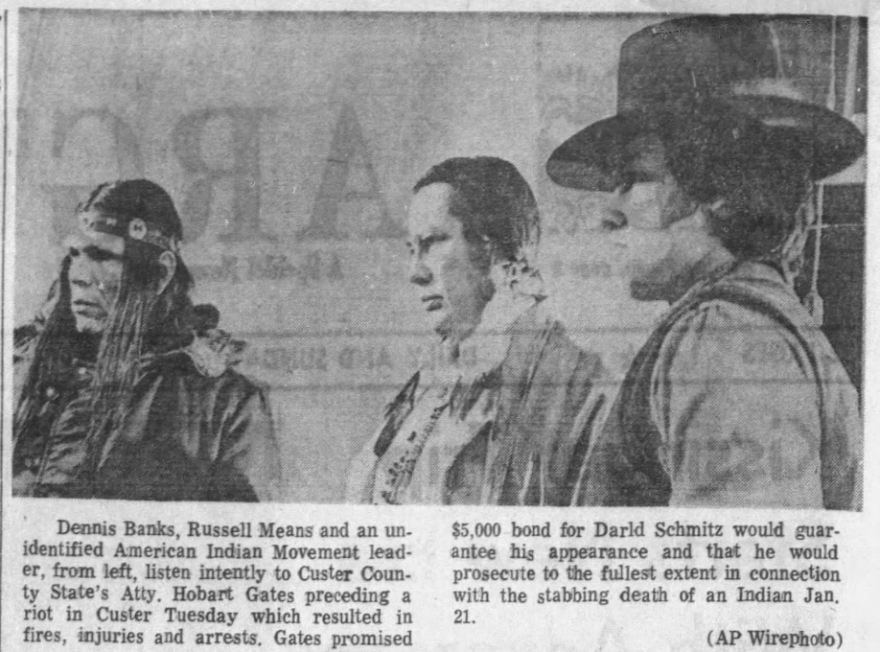American Indian Movement activists arrived in Custer on February 6th, 1973 to protest the charges against Darld Schmitz in the murder of Wesley Bad Heart Bull. The State’s Attorney’s decided to charge Schmitz with manslaughter instead of murder in the case. There were about 200 protesters led by AIM leaders Russel Means and Dennis Banks.
It began 10 days earlier on January 27. Bad Heart Bull was stabbed, but there were conflicting accounts of what events led up to the crime. Some witnesses said Schmitz was acting in self-defense. However, a friend of Bad Heart Bull claimed to have heard Schmitz state that, "he was going to kill him an Indian.” Five minutes after the alleged statement, and in front of four White and two Indian witnesses, Schmitz stabbed Bad Heart Bull.
Schmitz was arrested three days later and charged with second-degree murder. The charge was the lowest degree of murder charge available to prosecutors.
In response, Dennis Banks proclaimed that AIM members should gather and protest the charge issued to Schmitz. Custer County authorities postponed the Schmitz preliminary hearing after learning a caravan of AIM members that would be arriving in Custer on the 6th. While the state attorney was present to meet with anyone contesting how he handled the case, no more than 4-5 people were allowed into the courthouse at a time. Also, several law enforcement officers were on standby. Eventually, the protest turned into a riot and there was extensive property damage at the Courthouse and in the community. Banks and Means were later charged with rioting and assault.

The charges issued in the murder of Wesley Bad Heart Bull, along with unrest over tribal government, have been considered a catalyst for the occupation of Wounded Knee that began a few weeks later. About 200 American Indian Movement members moved into Wounded Knee and occupied the town for just over two months. But it was February 6th, 1973, a protest at the Custer County Courthouse turned into a riot with damage throughout the community.
Production help is provided by Doctor Brad Tennant, Professor of History at Presentation College.

